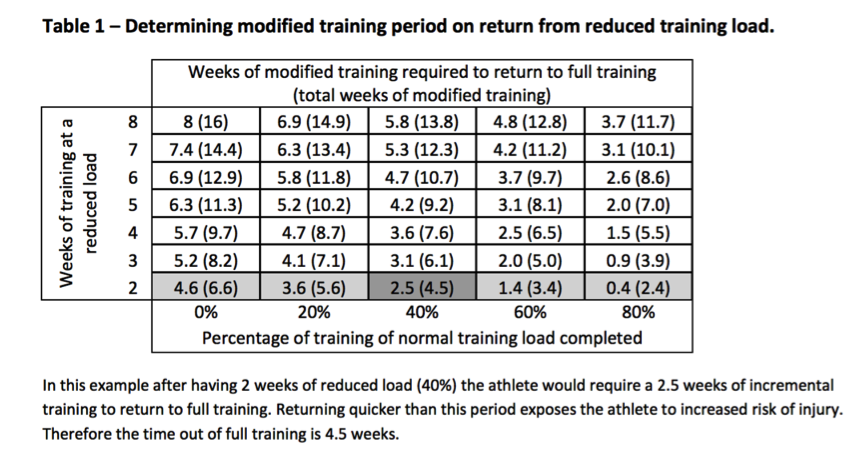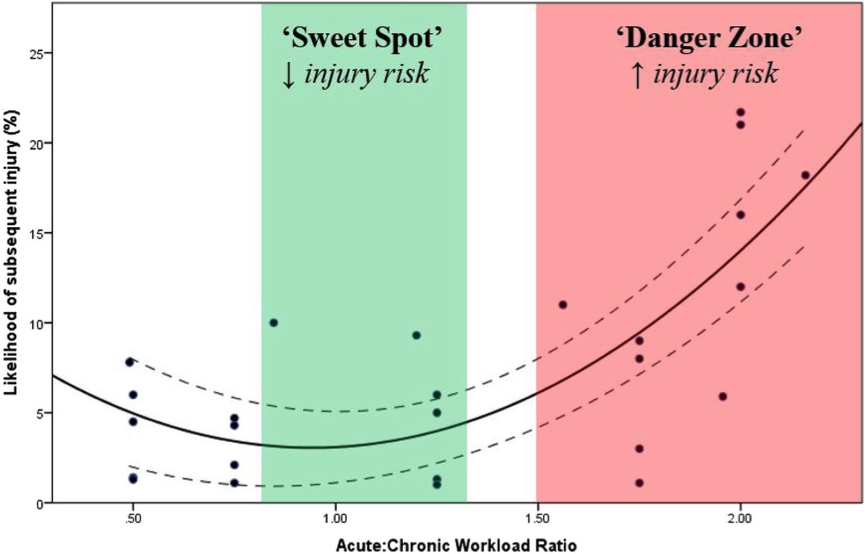I’ve had a very personal interest in looking at injury prevention strategies in runners after my own sacral stress fracture in April this year. My own injury happened without any obvious warning signs. There were no significant spikes in my training, no persistent niggles, there hadn’t been any change in my health – other than being sleep deprived by my then 2-month-old daughter, Emmie. You might want to read my previous blog on this here.
The experience highlighted to me the potential value of having some form of external monitoring system to reduce my risk of injury going forwards.
As I reviewed the literature for injury prevention strategies I found myself reacquainted with concepts that I’d first come across in my first undergraduate degree in Sports Science. These discussed load management, overtraining and overreaching syndromes and how to control and mitigate the risk of these. I have come across some excellent work such as that by the International Olympic Committee (IOC) and the Australian Institute of Sport (AIS), both of whom had produced guidance around reducing the risk of injury through relatively simple training/workload monitoring strategies (more on that later).
The idea of monitoring anything doesn’t fill me full of excitement, but there is good evidence to support the use of load monitoring strategies in helping to reduce the risk of injury. As the AIS point out in a common sense fashion, ‘athletic performance is optimised by the ability to train uninterrupted’.
Before looking at load monitoring strategies, it would be useful to remind ourselves of what we mean when we talk about training load. Although it might seem odd to think about running and training as a means of applying load or ‘stress’ to our body’s, this is what we have to do in order to change the body’s status quo (‘homeostasis’) and get fitter, stronger and (hopefully) faster!
Saw and colleagues summarise the effects of training nicely noting that ‘Training imposes stress on an athlete, shifting their physical and psychological well-being along a continuum that progresses from acute fatigue to overreaching, and ultimately overtraining syndrome’.
Overtraining Vs Optimal Training
Overtraining syndrome or overreaching reflects an imbalance between the athletes stress-recovery status. Optimal training involves getting the right balance of training load to stimulate performance benefits, but also to allow sufficient recovery so not to create a ‘stress-recovery imbalance’ that can lead to reduced performance, reduced motivation, poor mood and injury amongst other things (Le Meur et al., 2012).
Optimal training is dependent upon finding the right balance between activities that stress and load the body (e.g. running and strength and conditioning sessions) and activities that allow rest and promote recovery (e.g. adequate sleep, nutrition, easy days).

So firstly, is there any evidence that supports the efficacy of using injury prevention strategies – should we be bothered?
In short yes. There is good evidence that training workload monitoring can reduce injury risk.
- Research has shown that injury likelihood is low (less than 10%) when the acute:chronic workload ratio is within the range of 0.8 to 1.3. However, when the acute:chronic workload ratio exceeds 1.5), the likelihood of injury more than doubles (Gabett, 2016).
- Large spikes in training load are associated with increased injury risk for up to 4 weeks after the increase.
- The acute to chronic workload ratio is a better predictor of injury than acute or chronic loads in isolation.(Gabett, 2016).
- Athletes respond better to relatively small increases and decreases in training load (Halson, 2014). If load is applied in a sensibly graduated manner, relative to what the athlete is accustomed to, then high training loads can have a protective effect.
- Psychological load (stressors) such as negative life-event stress and daily hassles can significantly increase the risk of injury in athletes
Are you too well rested?
Most of us are familiar with the concept of overtraining as an injury risk factor, however, we probably wouldn’t flag up taking a break from regular training as a potential risk factor for injury.
Taking a break from training for holiday or to let an injury settle or even after some time out from your sport, can be great in leaving us feeling refreshed, revitalised and raring to get back ‘into’ training. However, we can run into problems if we get straight back into training from the point that we left off from. The AIS illustrate this point really well, highlighting that if an athlete trains at 60% of their normal volume and intensity for 2 weeks, it takes them 10 days to progressively return to full training load to reduce injury risk (i.e. not exceeding the 0.8 to 1.3 acute to chronic workload ratio).Obviously longer or more complete breaks in training will require a longer and more progressive return to full training to reduce injury risk.

So how do we go about getting the right balance between rest, recovery, training and performance?
The first thing is to understand what we mean by ‘training loads’.
Training load
This (unsurprisingly) refers to the total training that you undertake and it is often divided into two components.
1: External training load – simply minutes of activity, miles run etc.
2: Internal training load – this refers to how hard the activity has been in physiological or psychological-effort terms. A simple physiological measure to use would be heart rate, and a psychological measure (which closely correlates to heart rate) is the Borg Rating of Perceived Exertion Scale (the 10 point one) or even questionnaires that reflect your level of fatigue.
Calculating your acute to chronic workload ratio (ACWLR):
This should combine both external and internal training load measures e.g. time running x RPE. For example a 30 minute run at an average RPE of 5 = a total workload of 150 ‘arbitrary units’.
By combining the two workload values, this is more sensitive to signs of overreaching or overtraining syndrome. For example, an ‘overtrained’ athlete is likely to report a higher RPE rating for the same run if they’re over trained versus when they are not. Whereas if just training volume were monitored (e.g. distance or time run) signs of over training would not be evident.
The acute to chronic workload ratio is calculated by dividing the last 7 days of training workload by the last 4 weeks of training workload.
How to put the acute to chronic workload into practice
The most simple and cost efficient way is to make use of an excel spread sheet, where you log your total running time and your average RPE for each session.
If you cycle or go to the gym then you should also keep a track of these activities to reflect the total physical workload that your body is exposed to.
When planning your training the goal is to stick within the training low injury risk ‘sweet spot’ acute to chronic workload ratio of 0.8 to 1.3 (shown nicely in Tim Gabett’s work below).

Other markers that may reflect a heightened risk of overtraining and injury.
Capacity Tests
Specific capacity tests may be helpful to identify signs of overreaching and overtraining, particularly if you can tailor this to a specific injury/susceptibility. For example, a runner who has a history of hamstring strains (or hamstring tendinopathy) may find it useful to complete a hamstring bridge capacity at the end of each week’s training. If the number of reps completed is reduced from the athlete’s baseline, or if they report increased pain (recorded on a 0/10 VAS); these may indicate that the next weeks training load might need to be adjusted. In this example, it might be helpful to reduce the volume of faster paced running in track and tempo sessions. Reduced capacity and increased baseline pain can also act as a warning to seek advice from your coach, physio, sports doctor or other healthcare professional.
Fatigue: Recording how you are feeling might be helpful
There is good evidence that simple questionnaires that capture how we are feeling in terms of fatigue from training, fatigue from stresses of life and our mood and motivation to train are useful in monitoring our response to training loads.
Saw and colleagues (2016) concluded that ‘Subjective measures reflected acute and chronic training loads with better sensitivity and consistency than objective measures’. Going on to find that ‘subjective well-being was typically impaired with an acute increase in training load, and also with chronic training, while an acute decrease in training load improved subjective well-being’.
The implication of this is that we may find it useful to keep a record of how fatigued we are and even how enthusiastic we are about training. A downward trend in these variables may be signs that we are over doing it a little, and this trend can act as a safety trigger for us to cut back our training until we are back on form.
Summary
Whilst we all know that running, or taking part in any sport, involves risk of injury, there is a lot that we can do to minimize these risks. In doing so, we can also reduce the chance that we’ll fall victim to being sidelined, missing training blocks, PB’s and our sanity!



